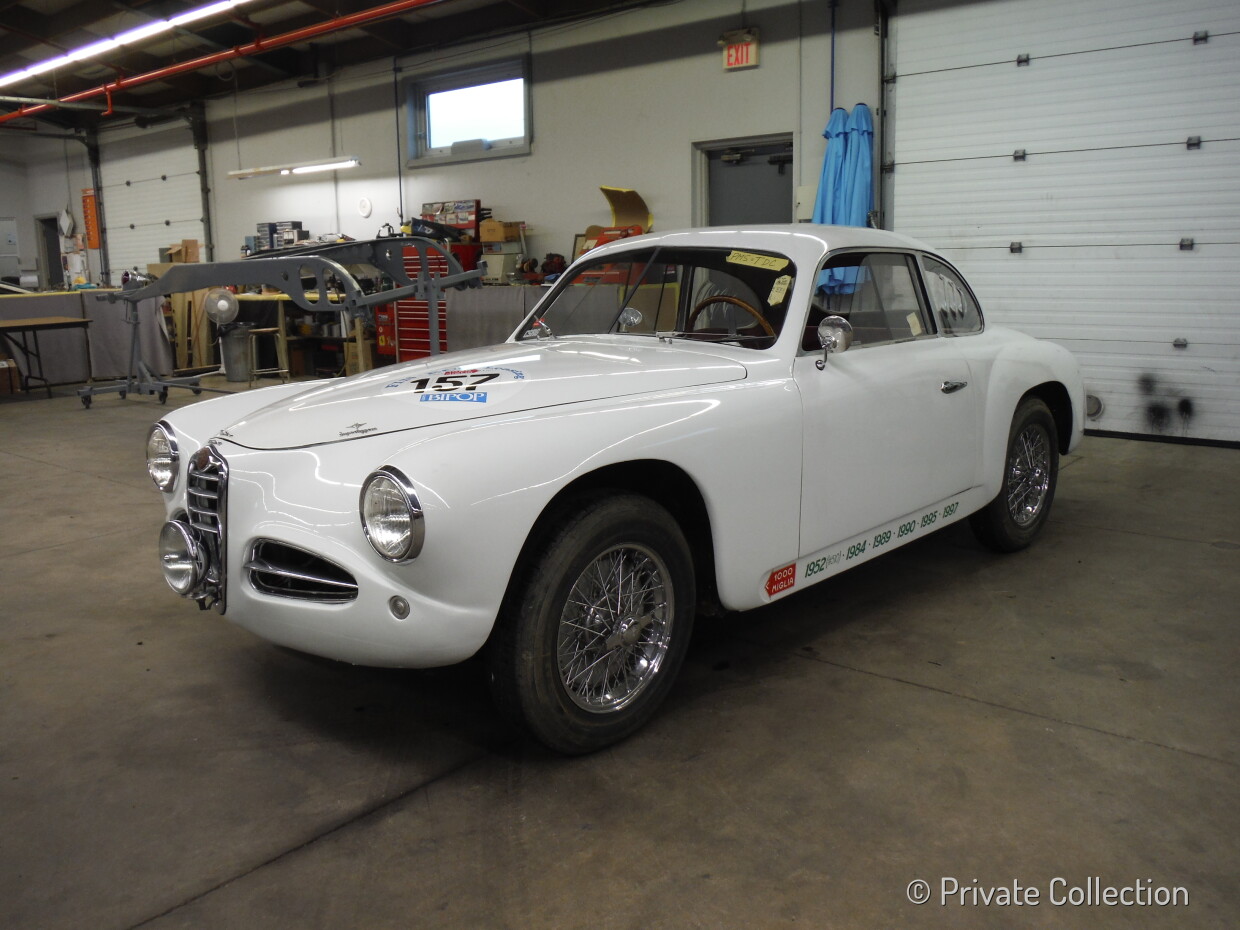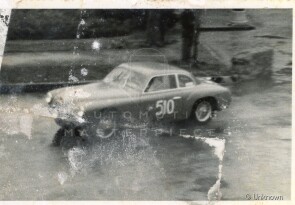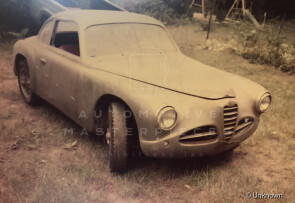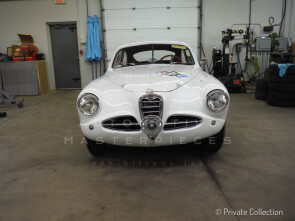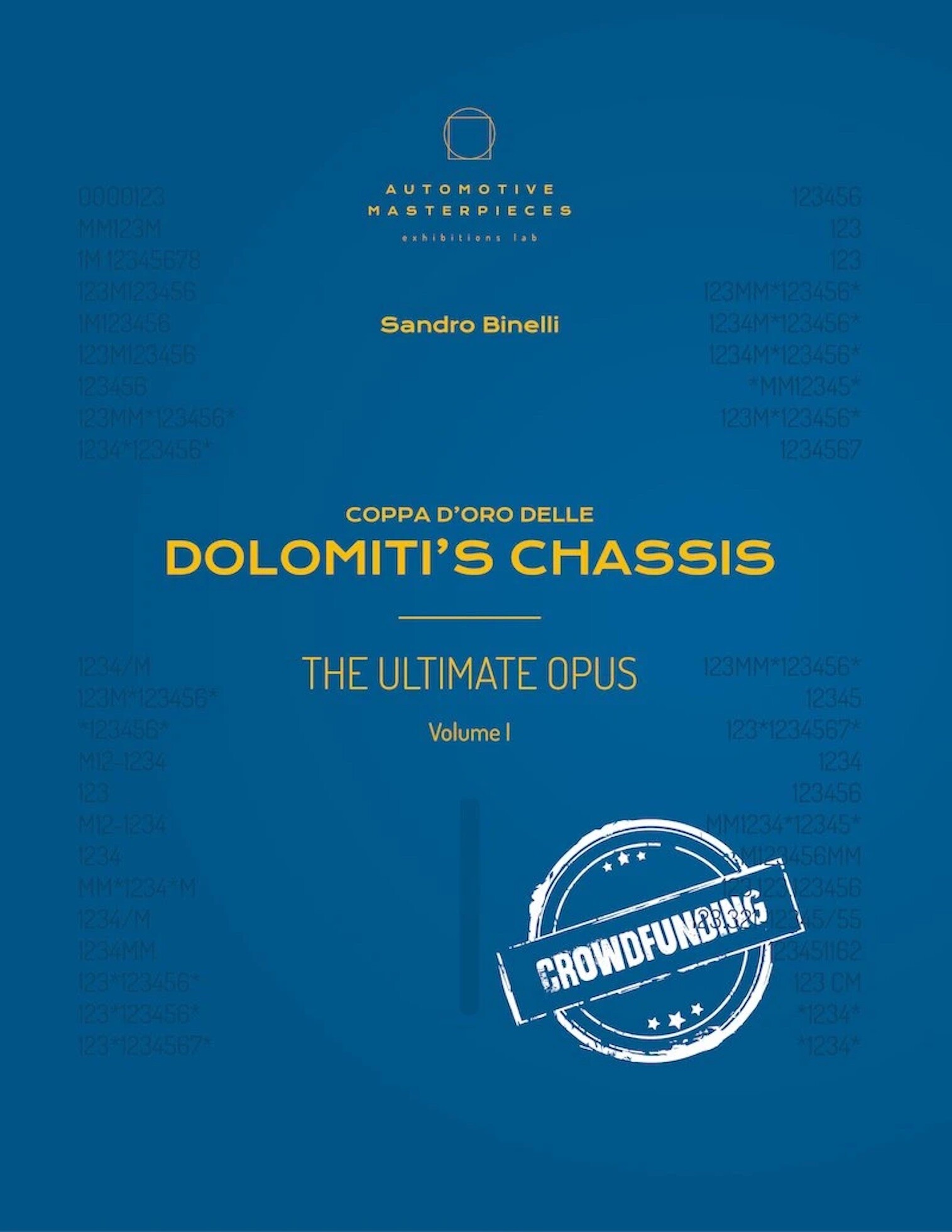
1952 Alfa Romeo 1900 Corto Gara
ON/OFF
Why am I an Automotive Masterpiece?
H. Works cars
Alfa Romeo (IT)
L. Limited edition cars
no. 4 manufactured, no. 1 remaining
In 1950, Alfa Romeo thought it was time to replace the glorious but now old pre-war 6C 2500 and to make a car keeping up with new technologies that now were proposing the body integrated into the chassis: a car, so to speak, modern. The car, entirely designed under the supervision of Orazio Satta Puliga, born and developed entirely at the Portello plant, would have contained, like Alfa Romeo tradition, several mechanical refinements. The Alfa Romeo 1900 was built between 1950 and 1959 and was the first entirely new post-war project of the company. It was the first Alfa Romeo built entirely on an assembly line, starting the high-quality mass production at the Portello. First monocoque production car and the first Alfa Romeo with left-hand drive. The heart, as in every Alfa Romeo, was the engine. With the 1900 the Milanese house abandoned the six and eight cylinders engines in favor of a fractioning that allowed a lower taxation. Instead, they were in light alloy, with two overhead camshafts and hemispherical chambers. Giuseppe Busso opted for an independent double wishbones front suspension. The rear suspension was new: the live axle with coil springs was connected to the chassis by two lower struts and a top triangle. The aluminum drum brakes were finned and the rims of the wheels equipped with slits to help cooling. The 1900 was one of the very first automobiles in the world to adopt radial tires. The configuration, the design of all the monocoque laminates and even the study of production equipment were carried out at the Portello. The first road exit took place on March 2, 1950 with Consalvo Sanesi driving. The shape was the result of a refining by Orazio Satta Puliga and Antonio Alessio. He consulted Gaetano Ponzoni, of the Touring that suggested significant finishing touches. The gear lever by the steering wheel allowed two three-seater sofas. The bakelite steering wheel had a horn ring. The dashboard had a large semi-circular speed indicator with oil pressure gauge and fuel gauge on each side. In the middle, the housing for the radio or the tachometer. The 1900 four-door sedan was the only model available until the introduction of the 1900C coupe in 1951 and the TI saloon in 1952, it was equipped with a 1.9-liter engine that delivered 90 hp and reached a top speed of 171 km/h. Production ceased in 1959 with a total of 17,243 cars produced in the various models. It was the “Alfona” for the most, the “Pantera” for excellence, “the family car that wins the races” in the slogans. She was much loved and very feared.
The Alfa Romeo 1900 C Sprint with chassis no. AR1900C*01047* was built in 1952 with "Superleggera" Touring body. The bold front shaping drew inspiration from the stylistic solutions already seen on the "Villa d'Este" coupé of 1949. As regards this coupé, there were two series produced. Notably, the cars in the first series had the door extending to the base of the bodywork. In the second series, the sill became conventional, i.e. framing the door. The 1900 C Sprint with chassis no. AR1900C*01047* belongs to the second series; it is one of the very few second series (with short doors) from 1952, as the transition between the series occurred at the end of that year. Most of all, this chassis was part of a very special plan that Alfa Romeo had in store for the 1952 Mille Miglia – the “Corto Gara”. Built on the Sprint C chassis with the same 2500 mm wheelbase, it was an official "Reparto Esperienze Alfa Romeo" version used for testing at the 1952 Mille Miglia. It was equipped with a highly tuned AR1308 engine and entrusted to the drivers Fangio, Cortese, Sanesi, Tadini, and Dätwyler. Only a handful of 1900 Corto Gara were produced; it's believed that their number totaled just seven. The initial three were adapted from the existing Touring program and were the ‘Stradale’ models, lacking the split windshield. The racing-exclusive lightweight versions differed slightly from their Stradale counterparts: they featured a split windscreen, had no boot door nor bumpers, but had a louver on the rear Plexiglas windows, and a bespoke dashboard with Jaeger tachometer, among other features. The roadworthy Corto Gara Stradale boasted additional comforts, including tubular bumpers, an air vent from the cockpit to the underside of the rear bumpers, sliding windows, lightweight door panels, all-Plexiglas windows, and a truncated boot door. All Corto Gara models were supplied with an uprated engine: while the twin-cam on the standard 1900 C Sprint developed 100 hp, the Corto Gara featured a highly-tuned unit, producing around 135 hp, with twin dual-barrel Weber carburetors coupled to the standard 4-speed on the column (such as in no. 01047) or to the Nardi five-speed floor-shift, and sitting on stiffer suspensions. Of the very few Corto Gara that seems to have survived, only two examples have been validated, namely: the Stradale no. 01361 and no. 01047 being the sole surviving "racing" example. The chassis no. AR1900C*01047* entered the 1952 Mille Miglia under the auspices of its parent company, with the great Franco Cortese at the wheel, but it had no fortune. The following year, however, it began with a success: 1st in class/3rd overall at the Coppa dei Laghi with driver "Ivanhoe", then it participated in the Coppa d'oro delle Dolomiti and the Coppa Intereuropa. Its racing career is still to be explored, and further participations in events are not to be excluded. However, already in 1954, the car was purchased by an US enthusiast and crossed the ocean, where it changed hands. It returned to the roads of the Mille Miglia in the 1980s, during the early re-enactments. Between 2021 and 2022, it underwent a complete and meticulous restoration. The car is featured in several books, including Sandro Binelli's Mille Miglia Chassis, Volume III.
